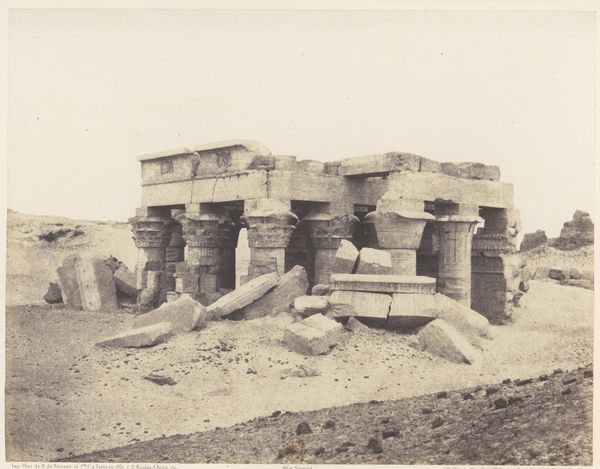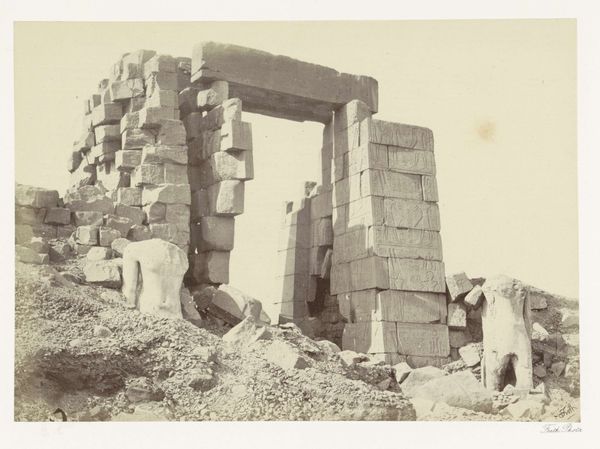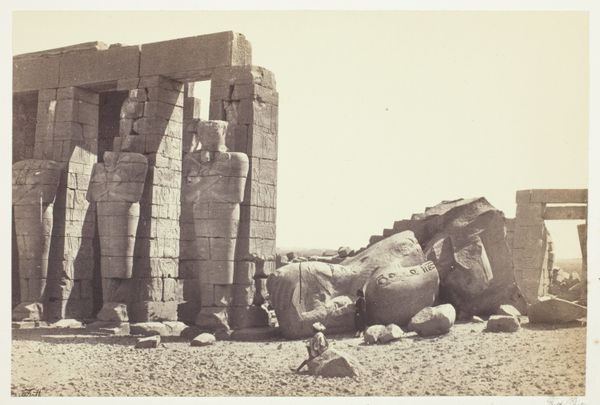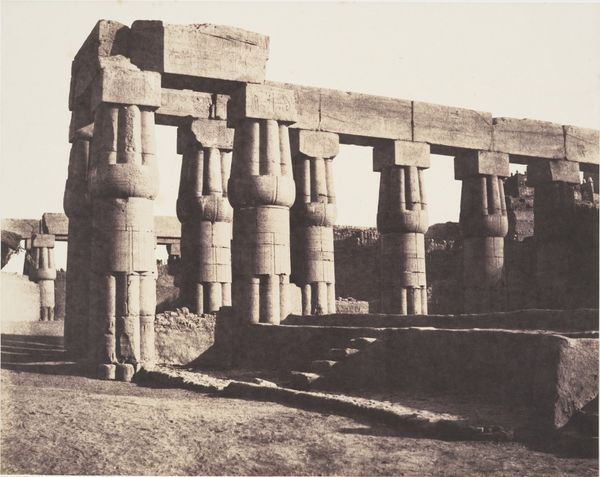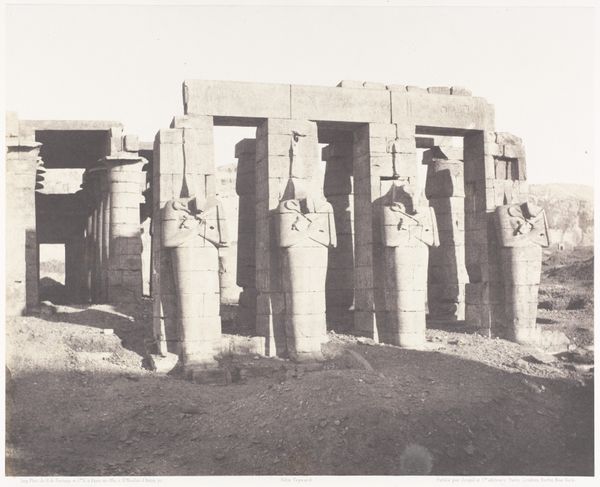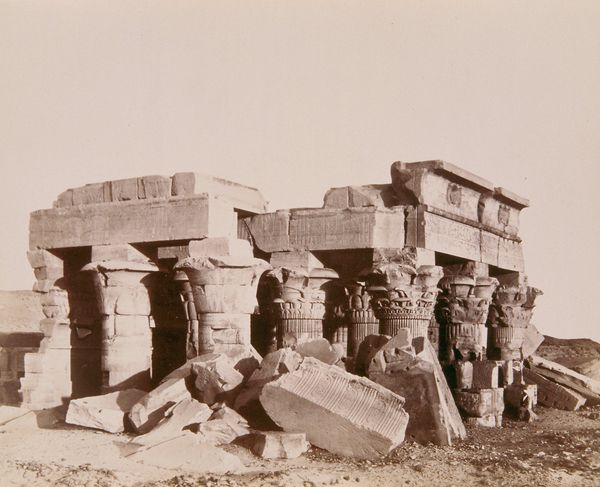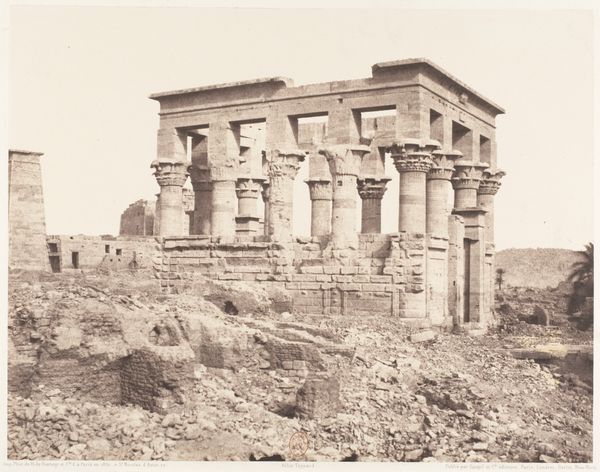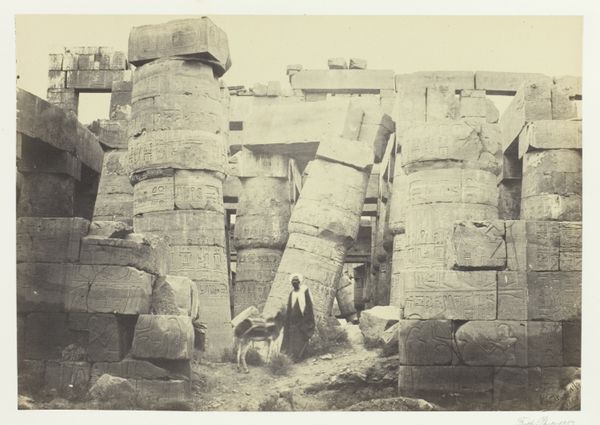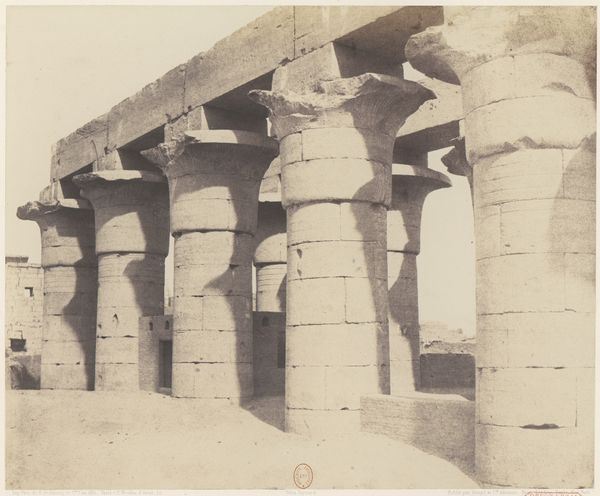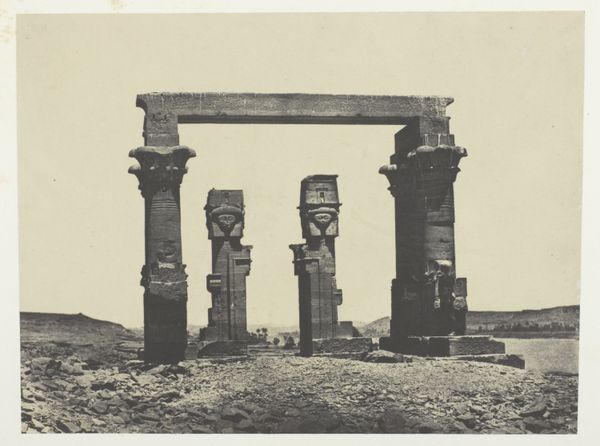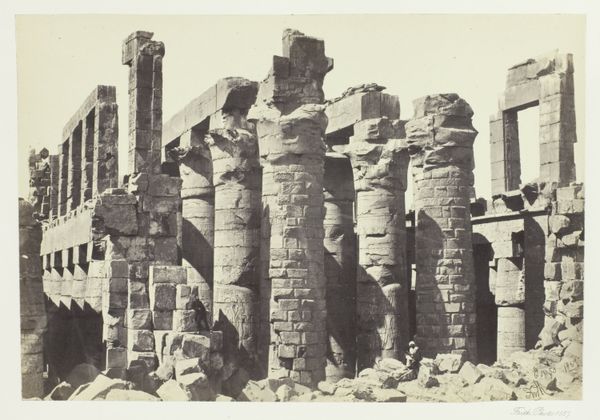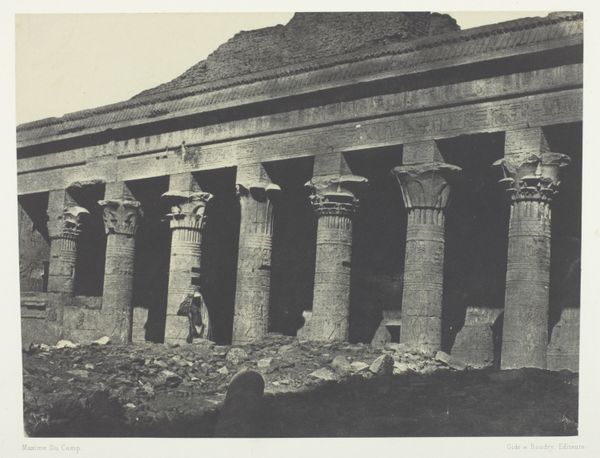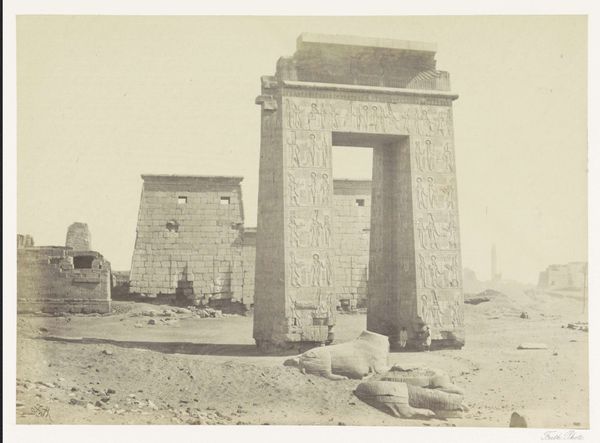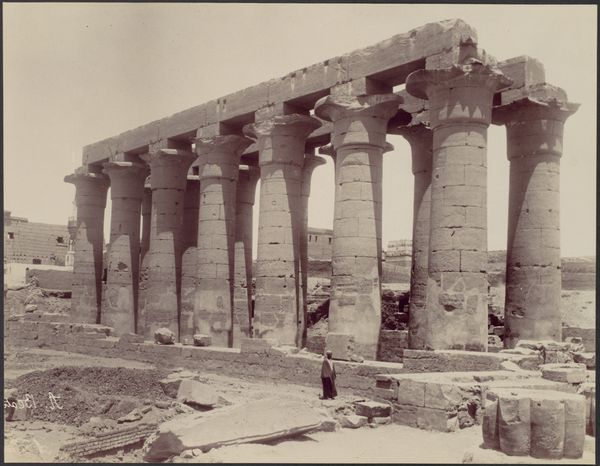
Karnak (Thèbes), Palais - Partie Posterieure - Fragment de Colonnades Vu du Point S 1851 - 1852
0:00
0:00
photography, gelatin-silver-print, architecture
#
landscape
#
ancient-egyptian-art
#
outdoor photograph
#
outdoor photography
#
photography
#
outdoor scenery
#
column
#
gelatin-silver-print
#
monochrome photography
#
architecture
#
monochrome
Dimensions: 23.9 x 30.6 cm. (9 7/16 x 12 1/16 in.)
Copyright: Public Domain
Editor: So, this photograph by Félix Teynard, taken between 1851 and 1852, shows a ruined colonnade at Karnak, in Thebes. It's a gelatin silver print, and what strikes me is the stark contrast and the weight of those massive stones. What do you see in this piece, beyond just a historical record? Curator: I see a potent commentary on power, and its inevitable decay. Teynard's photograph isn’t just documenting a ruin; it’s framing a narrative about the impermanence of empires. The imposing columns, once symbols of pharaonic authority and divine right, are now fragmented, scattered amidst the landscape. How does the stark, almost clinical depiction affect your understanding of that loss? Editor: It definitely underscores the scale of the loss, but also feels a little detached, doesn’t it? Like we’re observing it from a distance. Curator: Exactly. This distance is critical. Teynard, as a European photographer, is capturing a colonial gaze. He's presenting this 'discovery' – and I use that term advisedly – to a European audience, implicitly asserting a kind of ownership over the narrative of Egyptian history. It provokes questions of cultural appropriation and the power dynamics inherent in documenting other cultures, especially in that era. Do you think Teynard’s choices in composition – the stark light, the fragmented view – reinforce or challenge that colonial perspective? Editor: I think it reinforces it, subtly. The lack of people, the emphasis on the ruin… it’s like saying, "look what’s left." It ignores the living culture. I hadn't really considered that aspect of it before. Curator: And that is precisely the point. Examining the social and historical context helps us to understand the multiple layers of meaning embedded in this seemingly straightforward photograph. Editor: I guess seeing it just as a picture of some old columns is missing a much bigger point. Curator: Indeed. It is a potent reminder that art, even in its most documentary forms, is never neutral.
Comments
No comments
Be the first to comment and join the conversation on the ultimate creative platform.
